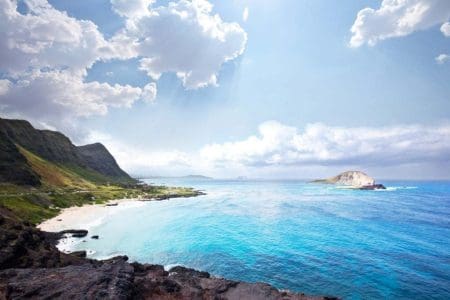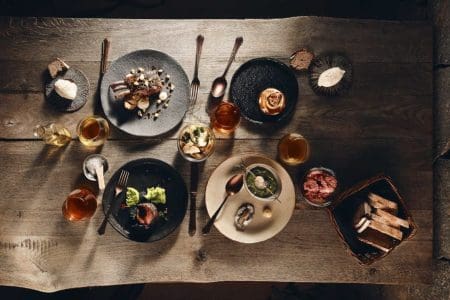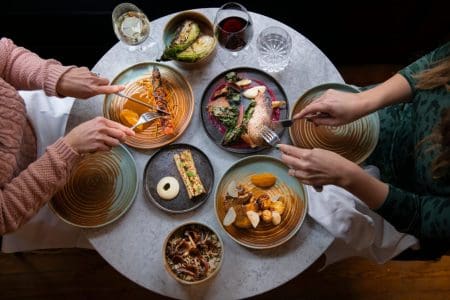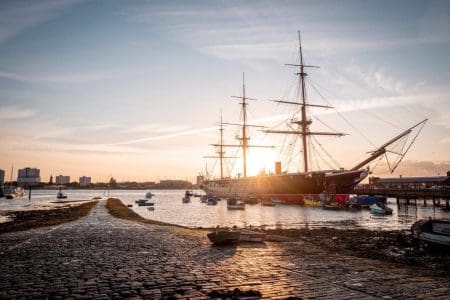Mark Bibby Jackson visits Graz Austria, a green city with a visionary view for our future.
It was on a visit to Iași in Romania a few years ago that I discovered the virtue of secondary cities, especially to seasoned travellers. Many tourists heading to Austria beeline for Vienna or Salzburg but how many visitors opt for the country’s second largest city, Graz?
Graz : Pointing the Way to a Green Future
Graz is Austria’s culinary Capital of Delight (since 2008) and has the highest density of vegan and vegetarian restaurants in the country. These facts in addition to many that follow I learned from my excellent guide David Zottler, a member of the DieGrazGuides association, who escorted me for most of my two days in the city – even inviting me to join his pub quiz team.
Our first stop is at Tribeka coffee shop in a distinctly hipster part of Graz. Here David explains that Graz is also a UNESCO Creative City and City of Design. With a fast-growing population, eight universities and many start-ups, Graz has not achieved this by sacrificing its soul. Some 69 percent of the city is green.
Intriguingly, Graz also has a female Communist mayor who works with the Greens and Social Democrats. Later in the day, we bump into the leader of the Green Party outside the local Parliament. She makes time to say hello and wish me a great stay in her city.
Mentioning that in a previous life I used to work on transport projects, David informs me that by 2040 the aim is for 80% of transport in Graz to be either by bike or public transport. The tram is free within the city Centre. Together with the surrounding state of Styria, Graz is investing €100 million (2021 to 2030) in a ‘Greater Graz cycling offensive’ aimed to make it the ‘bicycle capital of Austria’.
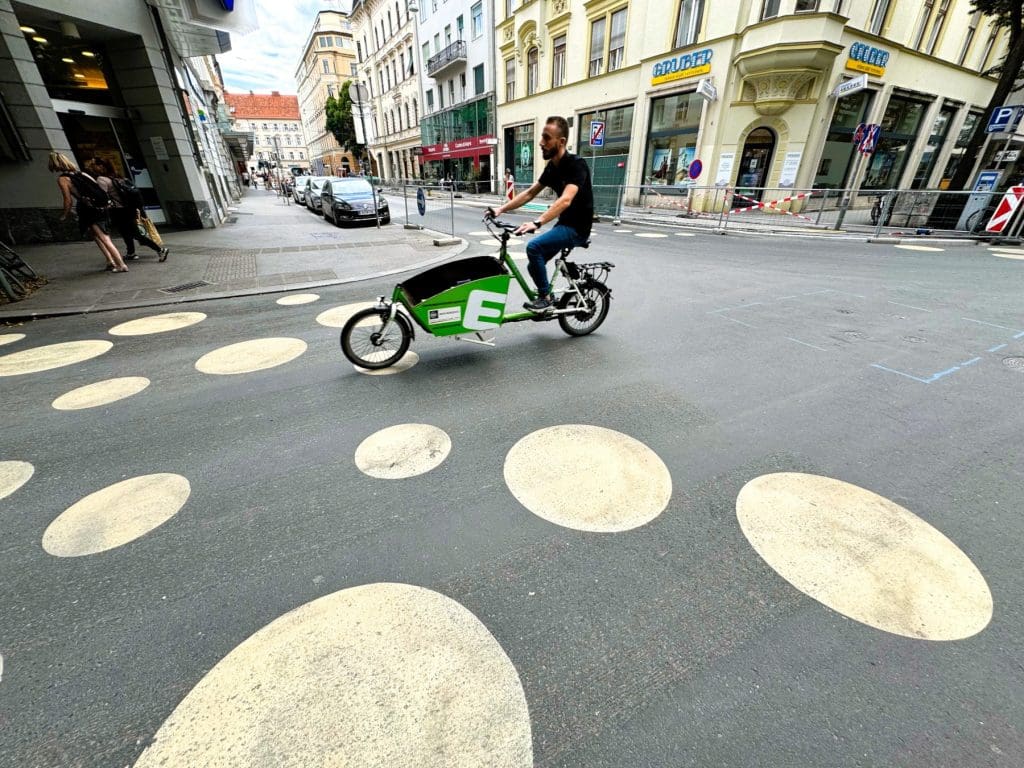
All this and we haven’t even finished our coffee!
The street on which Tribeka stands is currently being pedestrianised. Around the corner a road is being dug up to build a new tram line, which should open in 2025.
Graz is a city moving in a certain direction and that is most definitely green. There are even fountains on the street where you can top up your water bottle with the wonderful fresh spring water.
Graz : Renaissance of Baroque
A short walk, or even shorter hop on the tram, takes us into the UNESCO-listed world heritage zone. Along the way we pass by several Art Nouveau apartment blocks which were built at the turn of the last century. David leads me into a courtyard – it is a habit of his – to show me the bikes and bins, evidence that people still live here. These have not been converted into Yuppie flats or offices.
Graz’s wealth stems back to the 16th and 17th centuries, when the Hapsburgs ruled inner Austria from the city. According to David, it has the highest number of Renaissance courtyards – more than 50 – outside of Italy. But looking at the exterior of the buildings you might be forgiven for thinking the city to be Baroque. This is because many of the Renaissance buildings were given a Baroque façade. The result is a beautiful city.
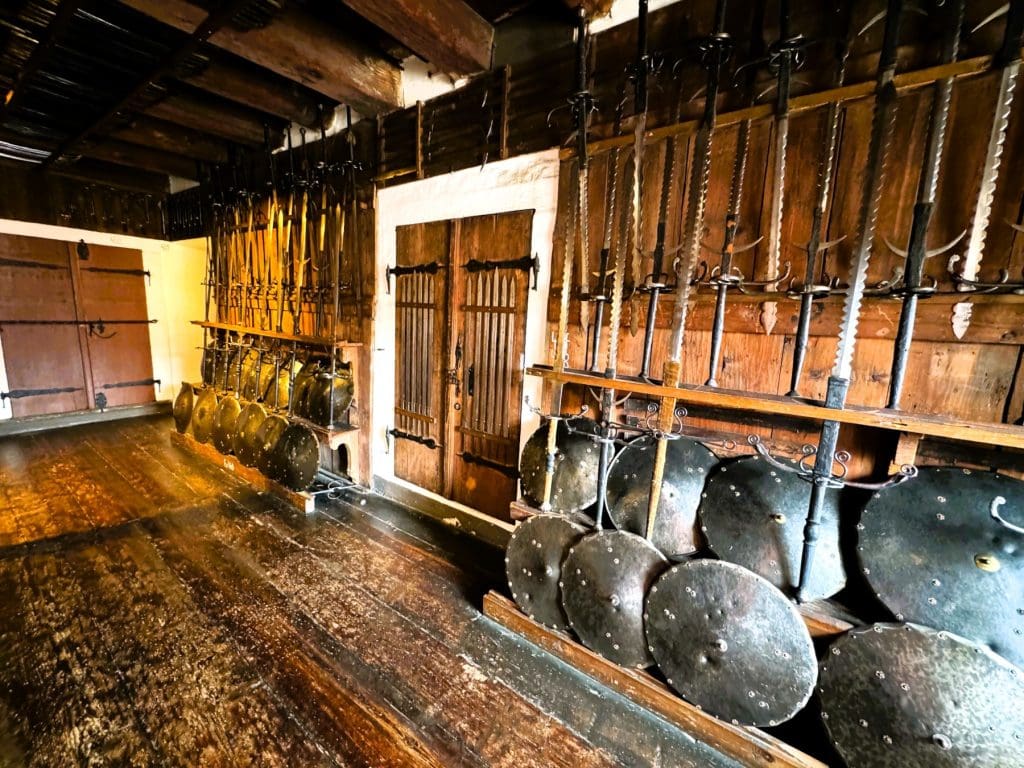
One of the most striking buildings is the Town Hall which has a Styrian Panther above its entrance. The coat of arms and symbol of Graz, consisting of lion, horse, eagle, bull and dragon, it can be seen everywhere. Outside the Town Hall is where we bump into the leader of the Green Party.
Just along from it is the Styrian Armoury museum which has the largest collection of weaponry in the world – some 32,000 pieces, although the 1640s building is perhaps more impressive than the armoury. It also has a lovely courtyard where a free military concert was playing during our visit.
Across the road – look out for the trams – is the Graz City Parish Church. Like most of the city it has a Baroque exterior but inside is 15th century gothic. Perhaps the most surprising thing about the church is the stained glass window from 1950s painted by Albert Birkle. He was denounced by Hitler for producing degenerative art, so his revenge was to paint Hitler and Mussolini as figures in the glass being persecuted for all time, the former resembles a zombie and the latter Frankenstein.
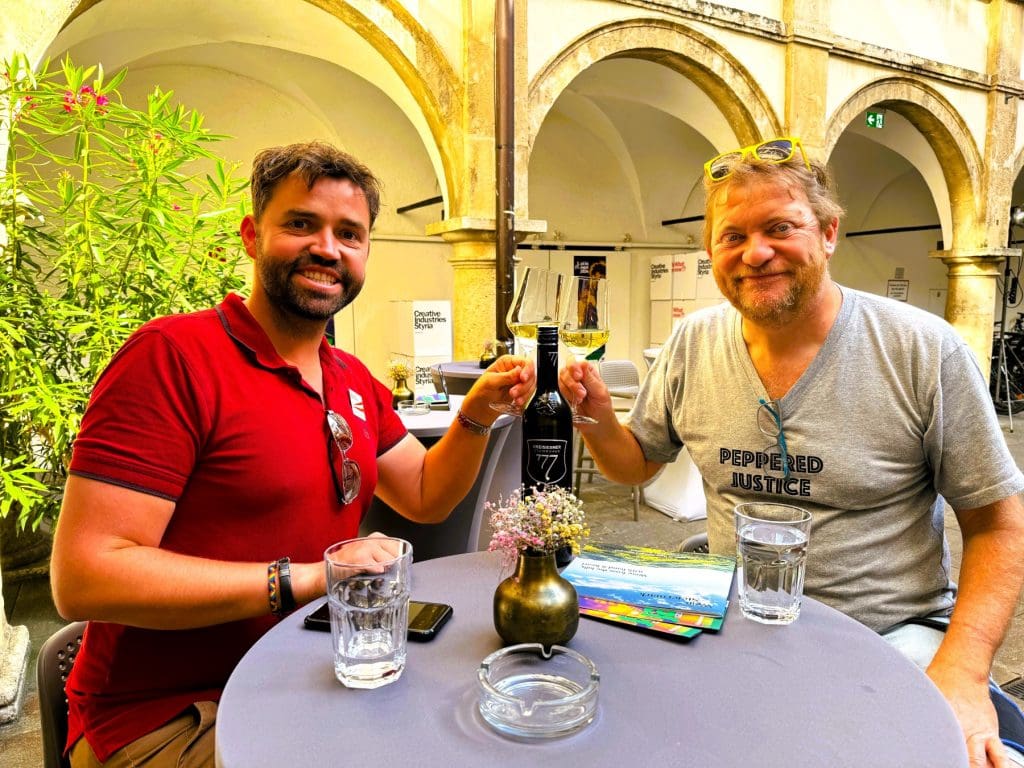
We finish our tour at Klapotetz wine bar in one of the medieval courtyards where we try some of the wonderful white wine for which Styria is renowned, often winning awards. Needless to say, David knows both owners and the waiting staff – he knows everyone in Graz. This I follow with a tasty meal at Die Herzl consisting of a pumpkin soup followed by some local fish.
Gries
The following morning, we meet at Jakominiplatz, which is Graz’s Trafalgar Square, only one dominated by trams not pigeons.
The previous day I mentioned to David my interest in how industrial spaces are repurposed, so he suggested we go the Gries community centre, a short tram ride away. Unfortunately, the tram is not running that morning, but the replacement bus proves perfectly adequate.
Centuries ago the property used to a mill built on the bank of the 13th century artificial canal (Grazer Mühlgang). This was the first time David had run a tour here, although I think not the last. The area has attracted lots of start-ups.
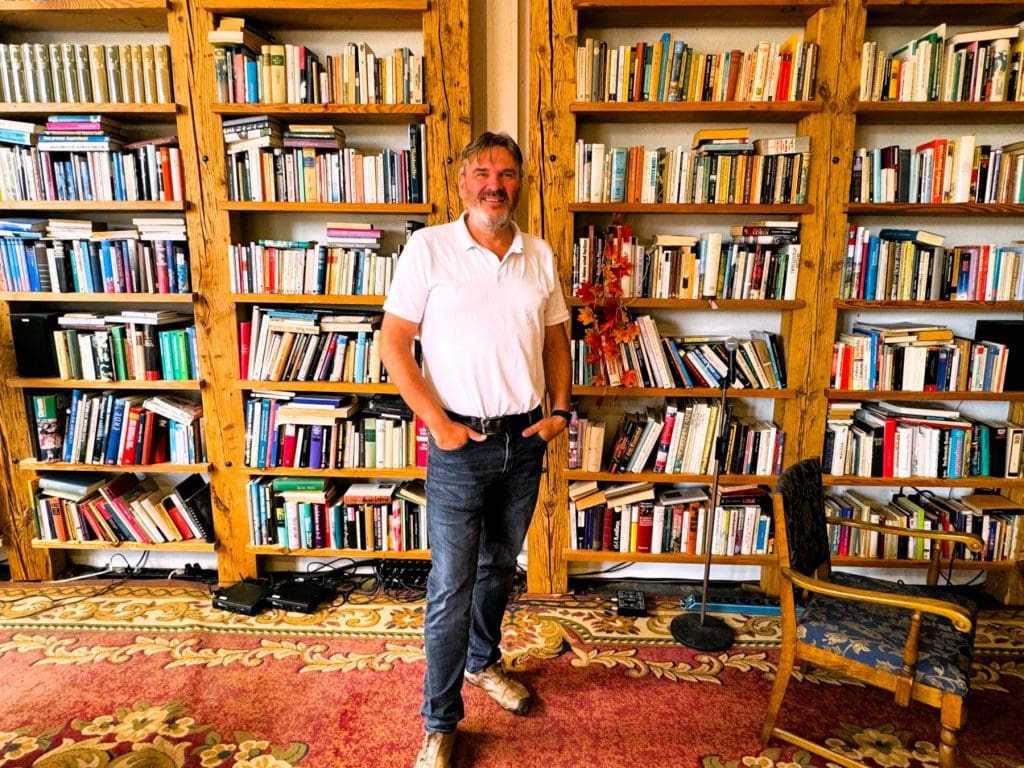
One of the first companies to come here was Edition Keiper, which publishes novels and art books. They have been here since 2010. Back then the building, which used to store cattle feed, was in a terrible state, but Robert Fimbinger knew the building was exactly what he wanted, he explains over a coffee.
Now, the whole area is a positive energy district. Many of the buildings are clad in solar panels while the huge tower that dominates Stadt Teil uses special cladding with pipes inside that can heat the building powered by the solar panels. Their aim is to reduce energy consumption by 50 percent.
Currently, they plan to sell their energy because they do not have sufficient storage capacity. They also have plans to have a water mill on the canal.
The complex includes a cross fit centre and squash court and even a shooting range. There is also an escape room and Bloc House climbing frame.
Graz Schlossberg
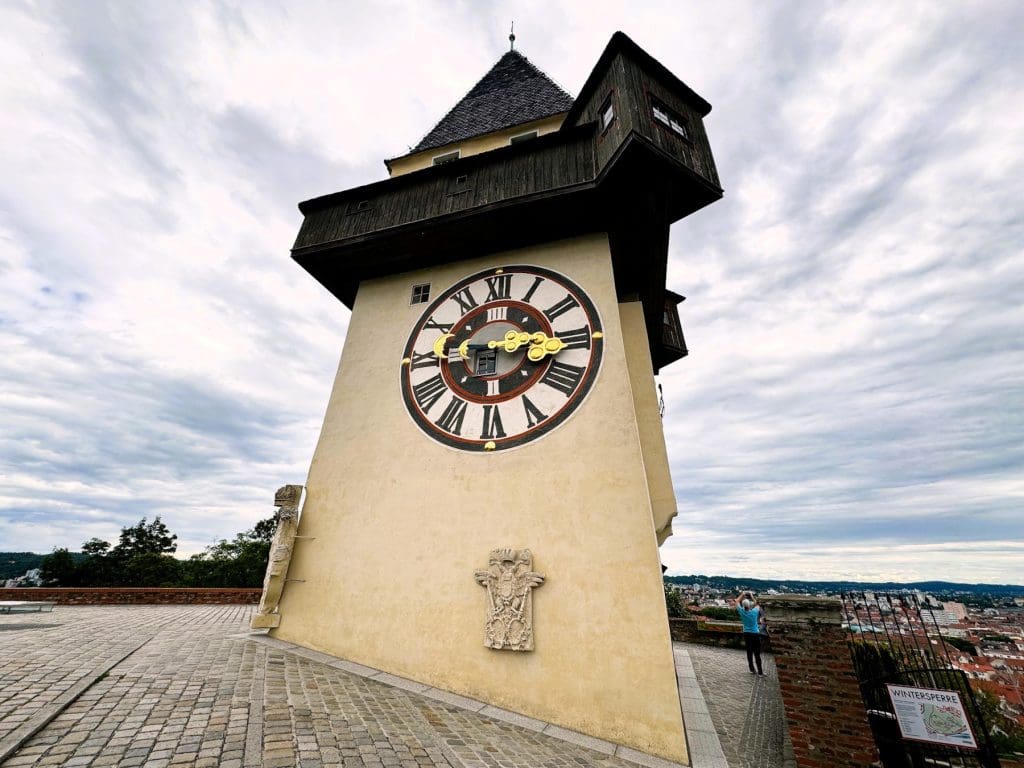
David escorts me back to the city centre, where I am left to my own devices for an afternoon to use my Graz Card, which allows me travel on local transport and provides free entrance to museums and galleries.
First, I visit the Armoury Museum, which really does have an amazing array of muskets, armour and swords. I particularly like the horse armour. Then I visit the Mausoleum of Kaiser Ferdinand II, which is next to Graz Cathedral, which was built between 1438 and 1462 for Kaiser Fredrich III. It has amazing frescoes and marble. After this I walk to the Graz Schlossberg, some 473 metres above city.
People have lived here since the 8th Century BC. The castle was never conquered, which apparently qualifies it for the Guinness Book of Records. However, it was handed over to Napoleon Bonaparte by the Austrians. Le Petit General miffed at not being able to seize the castle in battle, dismantled it, so little remains. The Clock Tower which dates back to 1265 was saved – presumably hidden in someone’s garden – and now stands imperiously over the city.
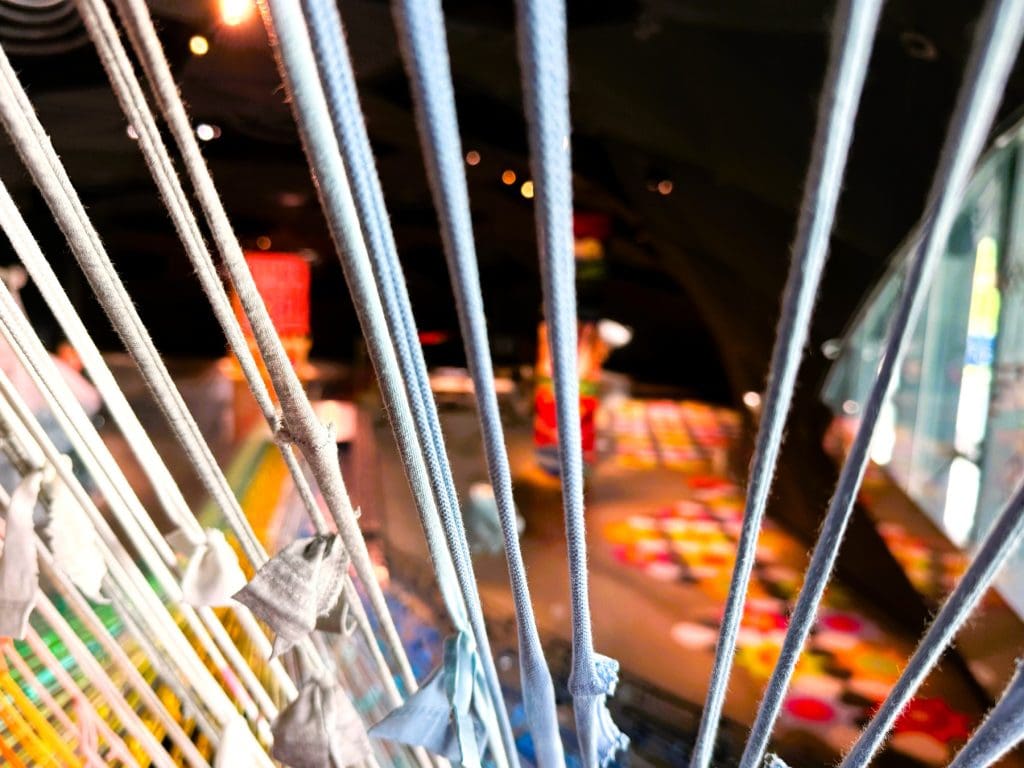
Graz Schlossberg has been turned into a nature park through which I walk to enjoy the wonderful views – there is also a funicular and glass lift for the less athletic. The Citizen’s Bastion is the most flowery part of the Schlossberg and opened in 1930. It is very peaceful here with great views of the terracotta roofs of Graz. It is a very simple – and enjoyable – walk down the hill, with lots of benches for you to break your descent and enjoy the views.
Back on terra firma I visit the Kunsthaus (Art Museum) on the far side of the River Mur. This is a most remarkable building, which during my visit had an interesting exhibition on the nature of work.
Gries
In the evening, I meet up with David for one final trip around Graz. Gries or the 5th District is on the same side of the river as the Kunsthaus. It was only incorporated into the city in the mid-19th century and was traditionally seen as the rough part of town.
According to David, even in the 16th century people were complaining about immigrants here, although then it was the Catholic Italians – so some things never change. It is still one of the districts with the highest number of immigrants in Graz.

Gries is a district of contrasts and contradictions. David points out a statue of the Virgin Mary who is praying while looking at a bar which used to be a brothel – this was the Graz red light district.
It is also an area known for its street art.
In 2016 the Micro Galleries Project came to Gries. One of the microgalleries was along the Reichengasse. It includes work by street artist Robin Good.
In amongst the street art are some beautiful art nouveau buildings, where wealthy merchants and traders lived. There is also the house where Lord Nelson and Lady Hamilton stayed when visiting the city.
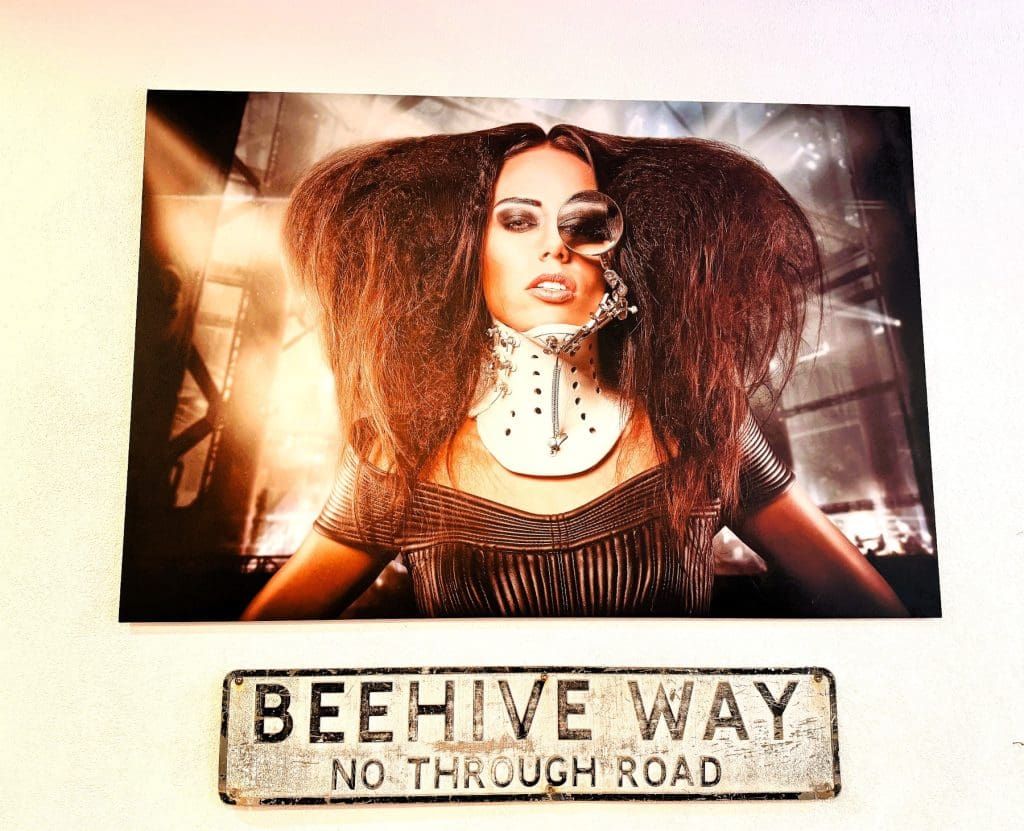
Our tour concludes at The Beehive, a second hand clothing store which gives lessons in English and German, as well as having their own foundation.
The building used to be a fruit and vegetable market. Established by an Austrian and a Kiwi, The Beehive is named after the Parliament in New Zealand. It also has its roots firmly in the community, using local goods wherever possible, making the Beehive a great place to buy a gift, as a memento of your visit to Graz. Close by is Café Moses, which has great Lebanese cuisine created by one of the modern day migrants to Gries.
Local Market
I bid goodbye to David at one of the many Irish bars in Graz having valiantly managed to avoid coming last in the pub quiz. Unlike Napoleon we were massively outnumbered.
However, this is not the end of my trip to Graz. The following morning, I visit the local market in Kaiser Josef Platz, close to the Graz Opera House.
It is lovely to sit in the sun watching the market open up full of locals without a tourist in sight. Overtourism is going to be the key theme for the next few years with the impacts of climate change at the forefront of the tourism agenda. Hidden gems such as Graz, that are committed to sustainable and accessible transport, with a welcoming local community should be high on our sustainable travel bucket list. Here we are welcomed and long may that last.
Getting to Graz Austria
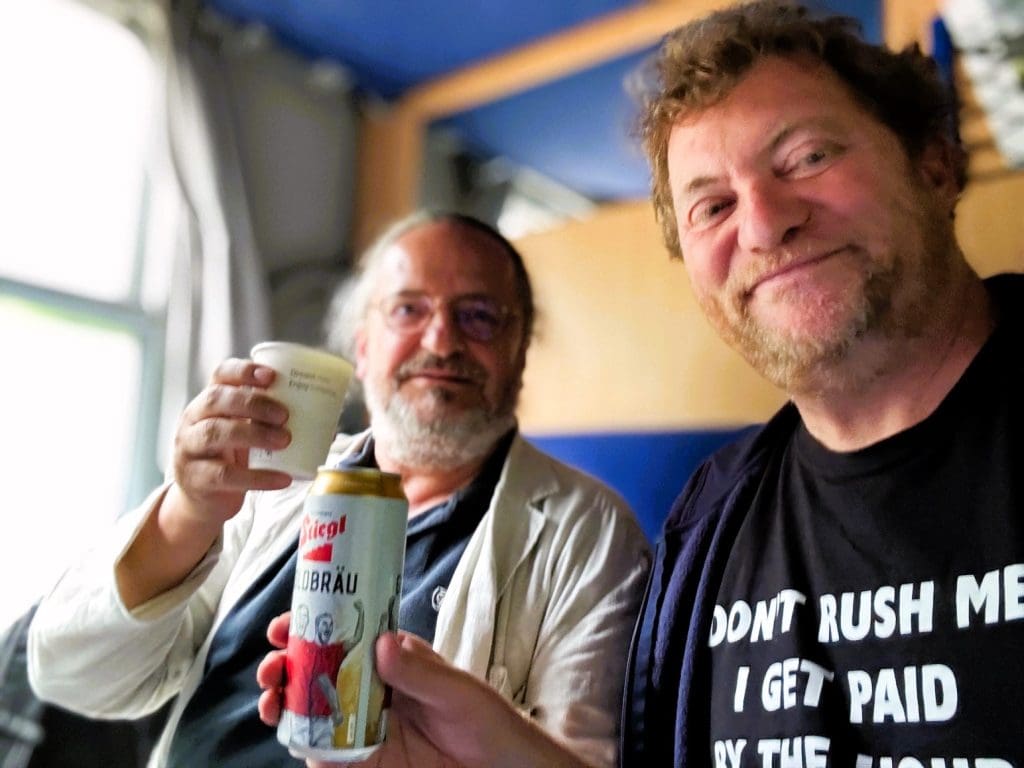
Mark travelled by train to Graz, taking the Eurostar from London St Pancras to Brussels and then the sleeper train to Salzburg. From there a train took him to Graz the following morning.
Graz Guide
If you wish to arrange a Graz city tour with David, you can contact him at [email protected] or @david.zottler.guide (Instagram and Facebook).
Graz Card
The Graz Card allows you free use all kinds of public transport, including the lift and funicular to Schlossberg, as well as free entrance to most museums and more reduction. For further information, click here.
Where to Stay in Graz Austria
Mark stayed at the delightful Hotel Gollner Schlögelgasse, which is a centrally-located hotel that has been in the Gerlach family since 1961. Built on the site of a 19th century horse and carriage park, it has a sauna, a pleasant roof terrace and individually-designed rooms, as well as an excellent breakfast.
Things To Do in Graz
For more inspiration on what to do in Graz, click here.
